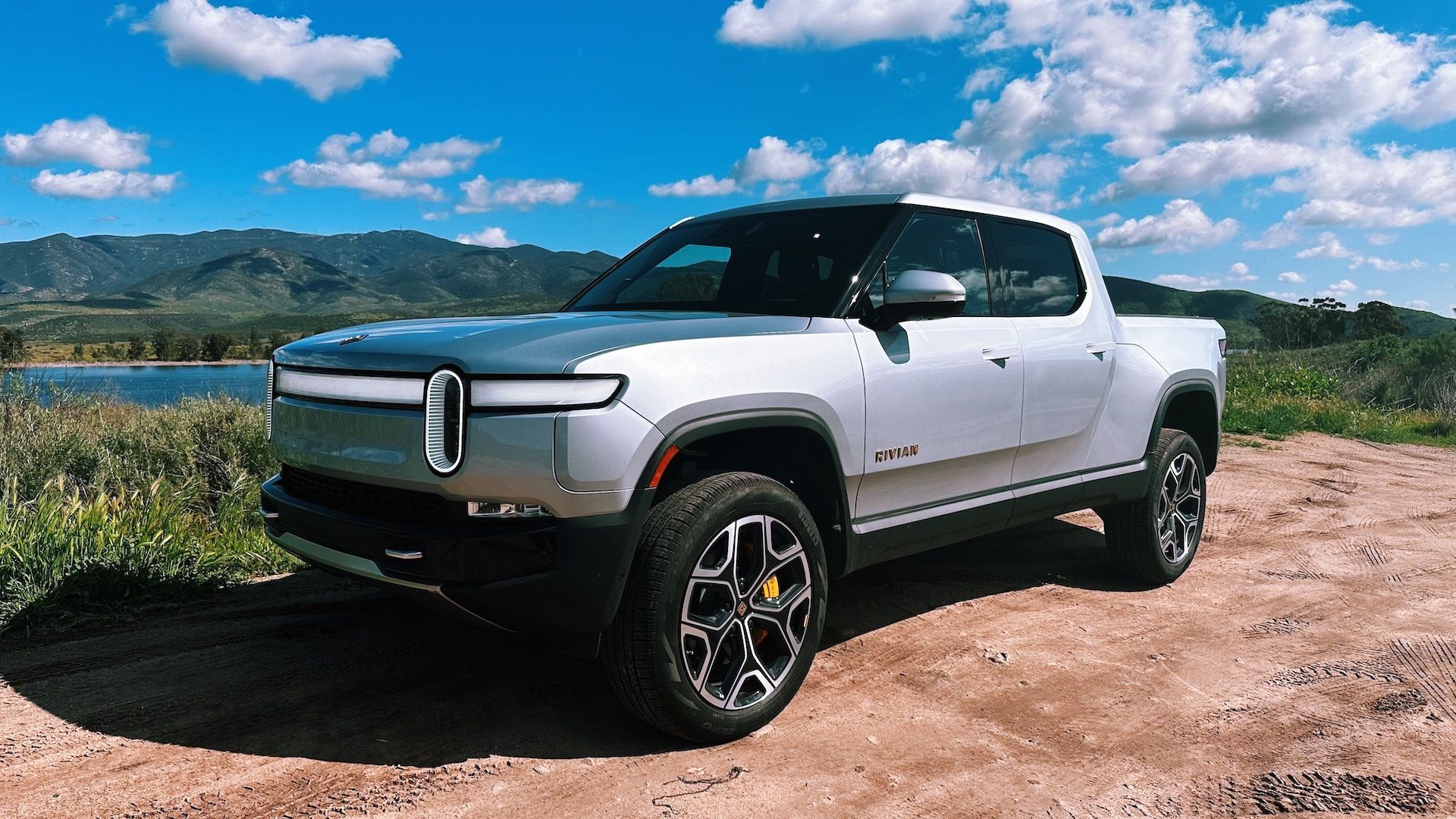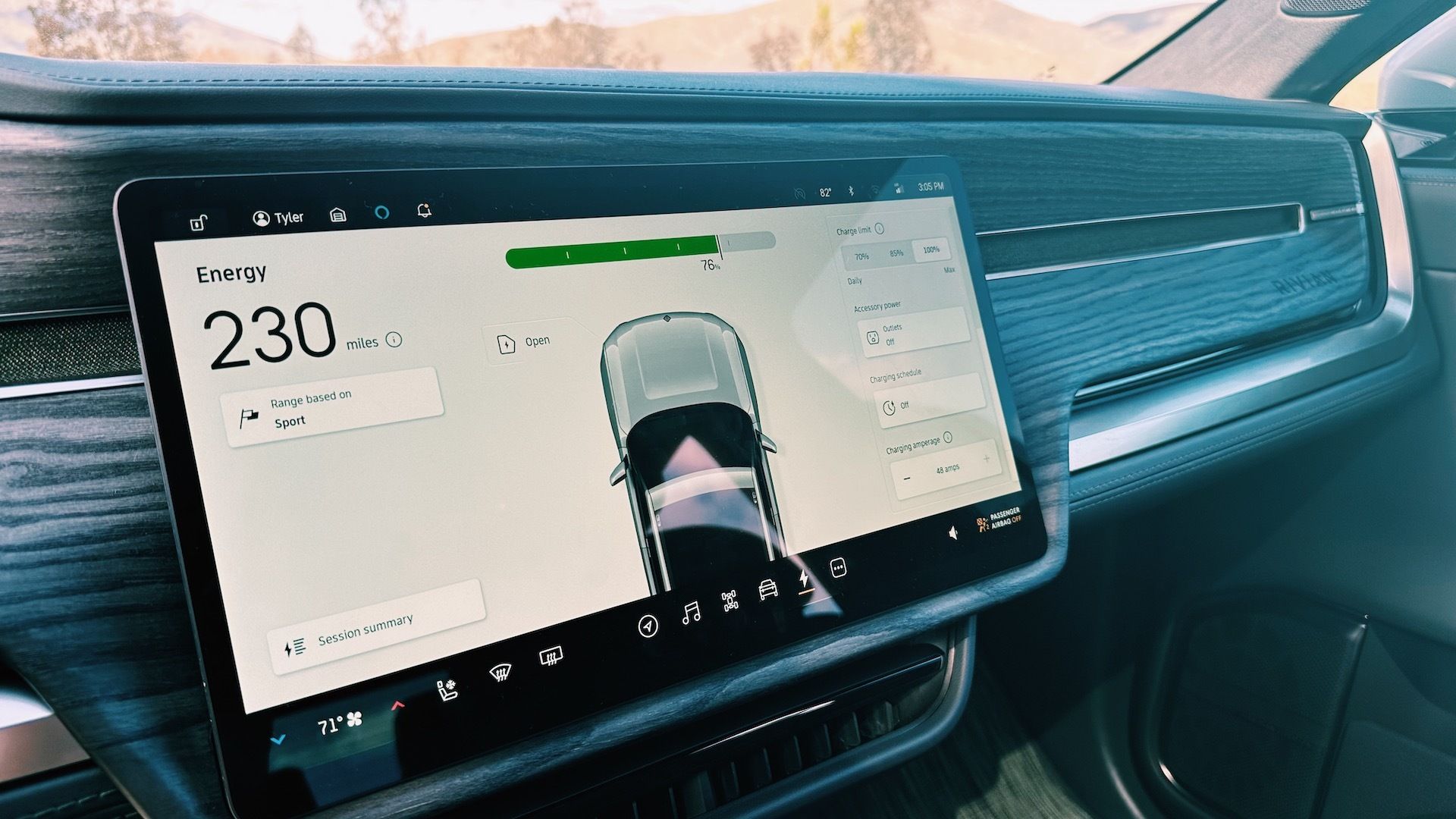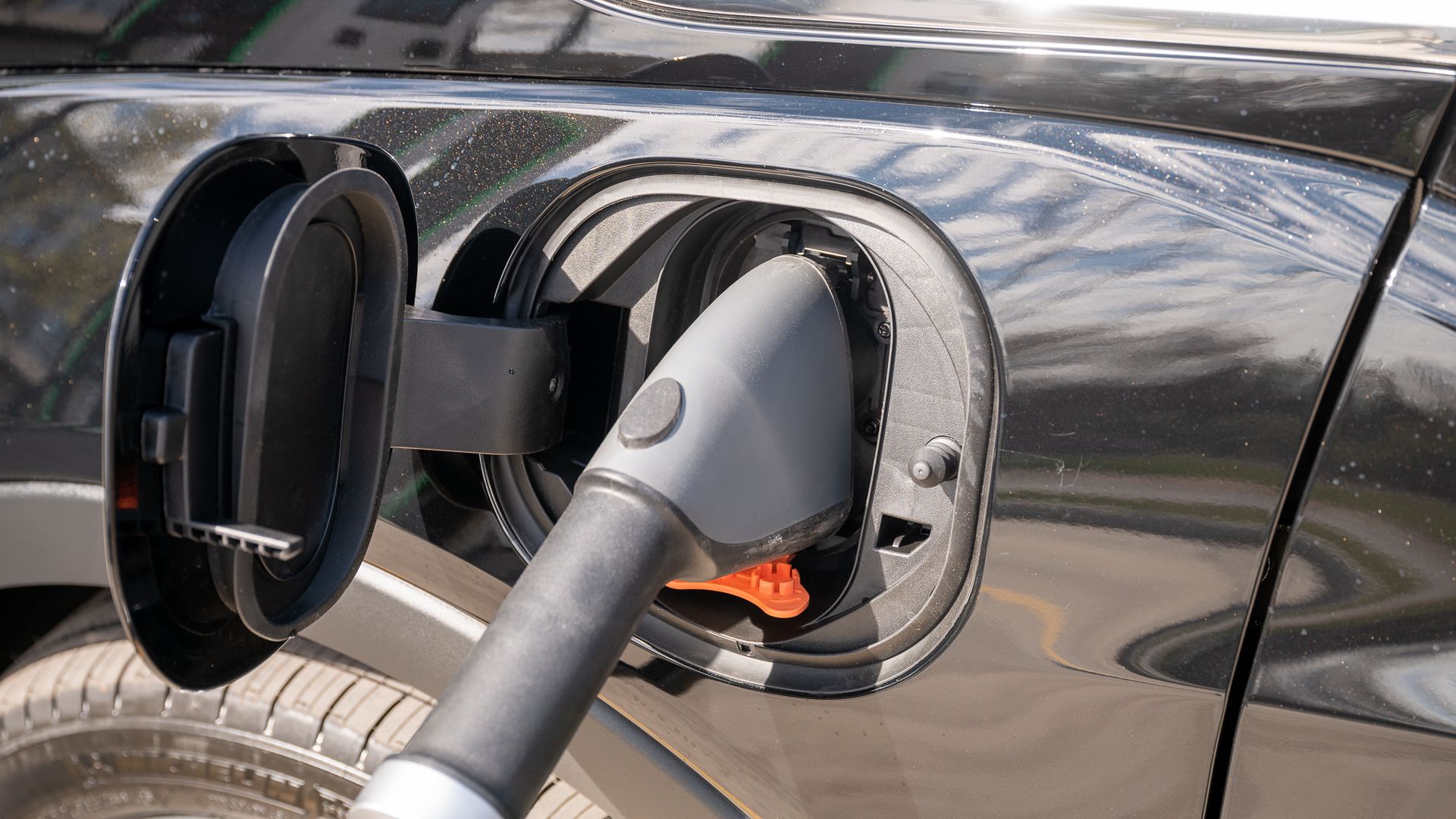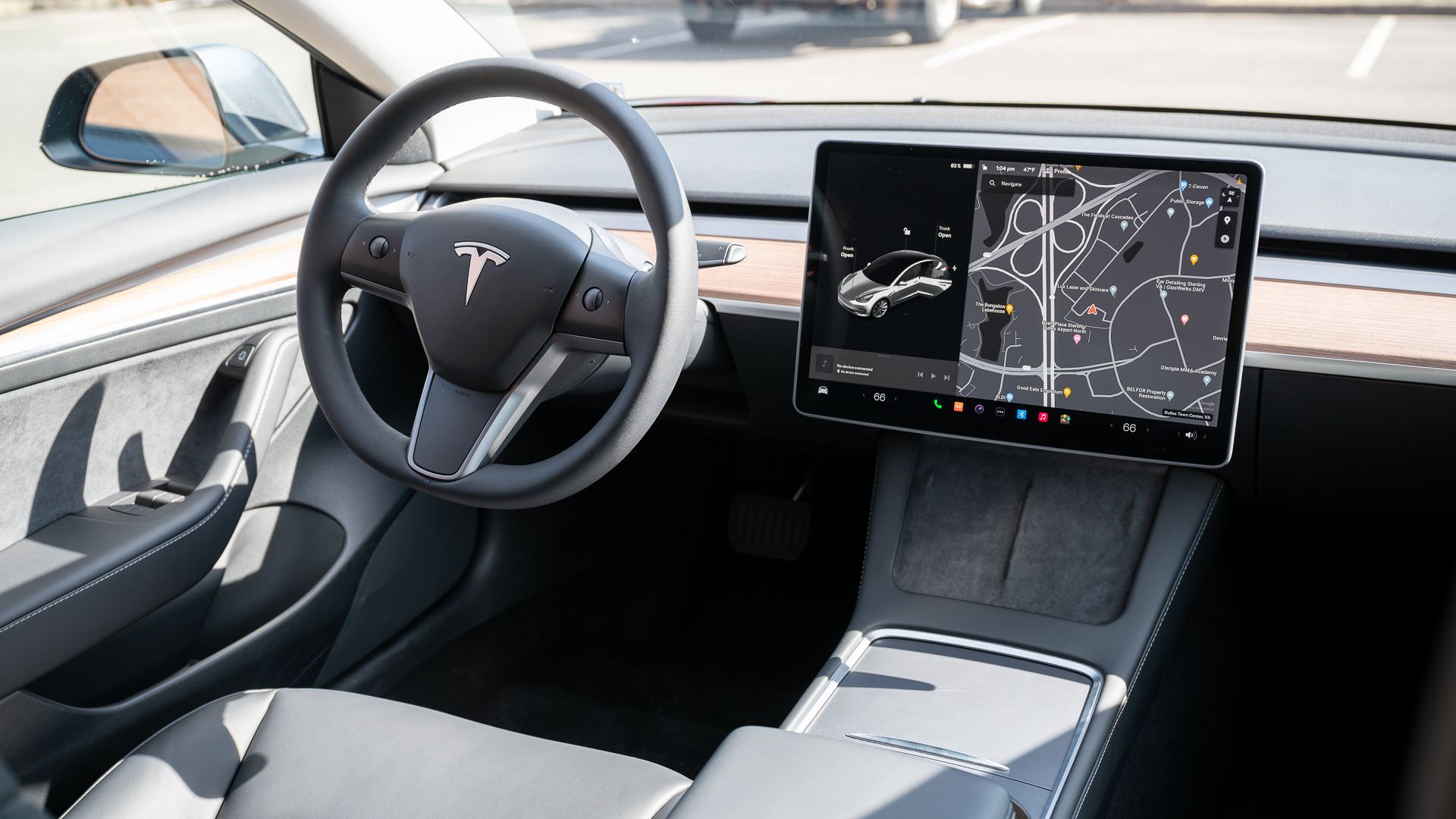
Understanding the Impact of Temperature on Your EV: Tips and Strategies

Understanding the Impact of Temperature on Your EV: Tips and Strategies
Key Takeaways
- Electric vehicles may experience a range decrease of 3-5% in hot temperatures, and up to a third of their range in triple-digit heat. This isn’t a major concern for most EVs, though, and not that different from the effect of heat on combustion engines.
- The absence of a hot engine in EVs allows the AC system to run more efficiently, and battery thermal management systems help maintain optimal battery performance and temperature in extreme heat.
- Fast charging in hot weather is safe (though maybe slightly slower), as EVs are equipped with cooling systems to regulate battery temperature during charging.
We already know electric cars get less range during cold weather , but what about the scorching hot summer months? Heat affects all vehicles, not just EVs, and during extremely hot weather, you may see the range decrease on an electric vehicle. Here’s what to expect and how to help your EV during the heat.
You probably have several questions if you are considering a new electric car or just bought one. Some could include fast charging on a hot summer day, how temperatures and air conditioner usage affect range, and more. When it’s ridiculously hot outside, we already have to battle with the AC, stay hydrated, and put on sunscreen. And while you’ll absolutely want to factor in summer temps on an EV, don’t sweat the small things.
Can Electric Vehicles Handle the Summer Heat?

Tyler Hayes / How-To Geek
A recent report from the analytics company Recurrent said that when temps warm up, EVs may experience a loss of range between 3-5%. That same report mentions that once things get into triple digits, over 100° F outside, some EVs could lose a third of their range, a loss of around 31%. However, the site mentioned that the 100°+ statistic comes from extremely limited data, so don’t panic.
For example, a new EV with a range of 280 miles could only get around 193 miles per charge during a heat wave or triple digits. Thankfully, this is an extreme example. Most electric cars don’t lose anywhere close to 30% or even 10%. Even at 90 degrees outside, the stats suggest a drop of around 5%, which sounds more reasonable.
The spicy hot truth is that when temps get above 100° Fahrenheit, any vehicle will experience range loss. Regular internal combustion engines (ICE) have oil heating up, AC units working overboard, and fuel mileage will dip. There are other aspects to consider regarding EVs, but there are enough models on the road worldwide now that we can safely say they’re not impacted by summer weather disproportionally more than ICE vehicles. So yes, EVs are perfectly fine in the summer heat.
How Does Heat Affect EV Range?

Tyler Hayes / How-To Geek
Again, heat affects any vehicle, but it’s not nearly as bad as what some would have you believe online, nor is it as bad as cold-weather driving. Electric vehicles don’t have a hot engine, which helps the AC system run easier (and cooler) than on an ICE vehicle, so feel free to use it as much as you need. A common practice on gas guzzlers is to turn off the AC to get more MPGs , but that’s not a big concern for EVs. Yes, all forms of AC will use energy, but EV cooling systems are much more efficient .
More importantly, almost every electric vehicle has a battery thermal management system (BTMS) or similar. Tesla, for example, uses the thermal system to keep its battery packs at comfortable and safe levels. Batteries like to stay in the same temperature range as humans, meaning not too hot or cold. The BTMS system will pre-heat the battery on a cold day for optimal performance or charging, and it also acts as a “coolant” system while the vehicle is in motion. Tesla’s webpage of summer driving tips specifically mentions how the system will cool down and “precondition” the battery ahead of driving or charging. Tesla even has a “dog mode” that’ll keep the car cool when you leave a furry friend inside during a quick gas station stop.
Related: How Long Do Tesla Batteries Last?
What about sitting in traffic on a hot day? Thankfully, getting a heavy EV in motion is the most significant drain on the battery, so sitting in traffic will sip on the juice, and you don’t need to worry about overheating at all. For comparison, an ICE vehicle constantly runs, keeping the engine hot, which gives electric cars an advantage during a traffic jam.
Remember that higher temps will lower the battery levels, but it’s not substantial. We’ve all left a phone in a hot car and returned to find a dead battery. That same thing could happen to an EV, but most models have temperature control systems to ensure a safe and reliable driving experience.
Is It Safe to Fast Charge an EV in Hot Weather?

Justin Duino / How-To Geek
Similar to how a smartphone gets hot during charging, EV battery packs deal with something similar, especially while using a fast charging station. However, as we said above, electric vehicles have liquid cooling throughout and plenty of thermal management systems, and it’ll keep the temps at an ideal level while you charge.
How long it takes to charge a Tesla (or any EV, for that matter) will vary based on outside and internal temps. On a scorcher of a day, the battery packs must run the cooling system while you’re actively charging, which could make it take a little longer than on a casual 75-degree day. This process also ensures longevity and good battery health. Either way, yes, it’s completely safe to fast-charge most EVs in hot weather.
Certain EVs Do Better Than Others

Justin Duino / How-To Geek
With countless new electric vehicles on the market, all using different technology, your mileage may vary depending on your model. The stats provided by Recurrent shows that some models, like the Nissan Leaf or Chevy Bolt EV, both struggle a bit and see bigger dips in range as outside temperatures climb.
And while Tesla owners typically don’t get the range estimated on the dashboard, the cooling system and heat pump kept range numbers pretty flat—meaning you won’t see a noticeable decrease in range when temps get upwards of 80-90 degrees Fahrenheit. Ford’s Mustang Mach-E and F-150 Lightning do pretty well when it’s hot outside, too. If your EV has a solid heating and cooling system for the battery packs (not the interior cabin), it’ll fare better in the summer or winter than others.
Tips to Improve EV Range in the Heat

Hannah Stryker / How-To Geek
With a capable battery management system, your EV will regulate the temperatures and ensure the best experience, performance, and range possible. Battery thermal systems control temps during charging, while in use, sitting idle, and even when the car isn’t actively being operated. As a result, it’ll run fine regardless of the temperature and keep battery packs in ideal temperature ranges to prevent degradation or performance loss.
Here are a few things you can do to improve an EVs range in the heat.
- Precondition the battery or interior temp whenever possible while it’s still plugged into a charger at home or work.
- Park in the shade, especially while charging.
- Drive conservatively and go easy on the throttle.
- Take advantage of regenerative braking for extra range.
- Use the AC instead of rolling down windows.
Preconditioning means the battery doesn’t have to work as hard once you finally hit the streets. Most EVs have a companion app for exactly this, so take advantage of it. And as we said earlier, the AC in an EV isn’t battling a hot internal combustion engine, making it easier to remain cold. Use the AC rather than rolling down a window, as that’ll negatively impact range more than turning the AC dial to full blast. Or, just buy one of the longer range EVs available , and none of this will be much of a concern.
Unless you have a long commute or own a short-range EV, your overall driving habits shouldn’t change much in the summer. Sure, the range will dip slightly, but that’s common with any vehicle type. So, get those batteries charged up to keep yourself and your EV cool when it’s extra hot outside.
Also read:
- [New] 2024 Approved Free Video Fiddling Unleash Potential with Vimeo Editing
- [New] 2024 Approved YouTube Paid Content Guide Mastering Membership for Monetization
- [Updated] Best Steadicams for DSRL Filming
- [Updated] Prime Video Camera Selections for Superior Recording for 2024
- 2024 Approved Chuckle Cache Timed Humor Categorized by Occasion
- Beyond Black and White: Restoring Color to Your Windows 10 Interface
- Easy Steps to Trim Videos on Your Mac and Remove Excess Footage
- How to bypass Motorola Moto G73 5G’s lock screen pattern, PIN or password
- How To Extract And Delete Both Hard-Coded & Soft Subtitles in MP4 Videos
- How to Resolve Displays Lacking HDCP Support
- MacX Video Converter Pro Masterclass: Effortless Video Downloads & Conversion Techniques Exclusive for Mac Enthusiasts
- Solution: Melatonin Has Been Shown to Modulate Immune Responses, Potentially Reducing Inflammation and Autoimmune Reactions; However, More Research Is Needed to Establish Effective Dosing Protocols.
- Step-by-Step Guide: Converting DVD Show Episodes Into Multiple File Formats Like MP4, AVI & MKV
- Step-by-Step Guide: Transforming MP4 Files Into AVI Format Using HandBrake
- Unlock More Powerful Features with These Superior YouTube Downloaders (Orbit Downloader's Alternatives)
- Title: Understanding the Impact of Temperature on Your EV: Tips and Strategies
- Author: Edward
- Created at : 2025-01-24 12:14:41
- Updated at : 2025-01-31 10:50:21
- Link: https://vp-tips.techidaily.com/understanding-the-impact-of-temperature-on-your-ev-tips-and-strategies/
- License: This work is licensed under CC BY-NC-SA 4.0.